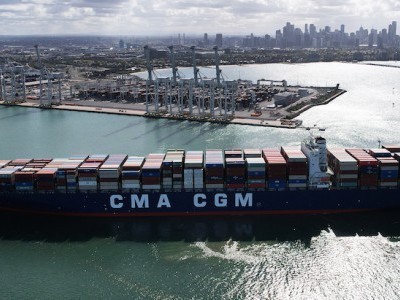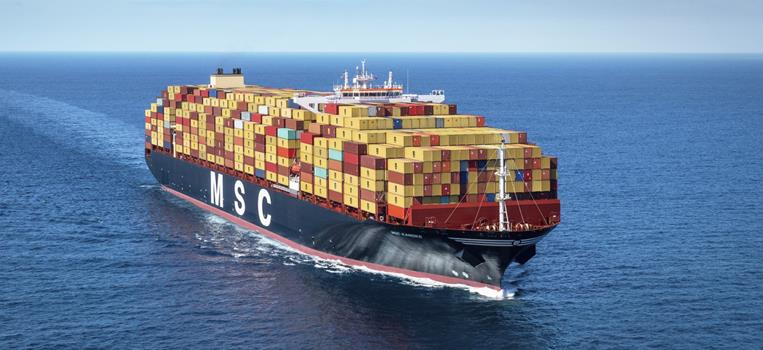Signal Ocean: Dry Weekly Market Monitor - Week 38 of 2024
Sep 18, 2024Chart of the Week: Grain dry bulk flows to China
This week's charts focus on the monthly volume of soybeans and corn exported from Brazil and the U.S. to China for the current year, compared to the previous two years.

The special focus this week is on the monthly quantity of soybeans and corn exported to China, comparing the current year’s shipments to the growth trends seen in the previous two years. Brazil continues to surpass the U.S. in terms of monthly shipments sent to China, maintaining a dominant position. However, both countries experienced a significant slowdown in the summer months, raising concerns about the overall health of China’s economy and its future demand for grains. This slowdown reflects broader economic uncertainties within China, where the country’s grain reserves are swelling, and demand for key imports is decreasing, having a notable impact on global agricultural markets.
Recent reports suggest that China’s economic slowdown could pose serious challenges for farmers in Brazil, the U.S., and other major exporters. The potential decrease in Chinese demand is particularly troubling given its status as a top importer of soybeans and other key agricultural products like barley, with Australia also feeling the effects. For Brazil, which relies heavily on grain exports, the economic shift in China comes amid internal challenges, including an ongoing drought that threatens crop production.
One of the major concerns for Brazilian grain exports, besides China’s softening demand, is the severe drought currently affecting parts of the country. While key agricultural regions producing corn, soybeans, sugar cane, and coffee have not been significantly impacted by the drought in the Amazon River Basin, there remains worry about the long-term effects on the country's overall agricultural output. Additionally, wildfires in the Amazon have ravaged millions of acres, making this year one of the worst on record for the region. These fires are putting further pressure on Brazil's farming industry, as smoke and fire damage can affect crop quality and productivity.
Despite these challenges, Brazil’s 2023-24 crop season benefited from timely rainfall, allowing for strong yields. Though the upcoming rainy season, which typically starts in October, may be slightly delayed, weather forecasts suggest it will still provide sufficient rainfall to support the planting and growth of next year’s crops. Nonetheless, the combination of China’s shifting economic landscape, global market fluctuations, and environmental pressures could complicate the future of Brazilian and U.S. grain exports. The global grain trade, particularly with China, may face a period of heightened uncertainty, making it critical for major exporting countries to monitor market dynamics and adapt to these evolving conditions. Goldman Sachs and Citigroup have already revised their full-year forecasts for China's economic growth down to 4.7%, following a slowdown in industrial output that hit a five-month low in August. The weak performance in August has intensified focus on China’s sluggish economic recovery, emphasising the need for additional stimulus to boost demand.
For more information on this week's freight, supply and demand shipping trends, see the analysis sections below. You can also log in to our Newsroom page under Insights & News to stay updated with the latest reports.
SECTION 1/ FREIGHT - Freight Rates ($/t) Mixed
‘The Big Picture’ - Capesize and Panamax Bulkers and Smaller Ship Sizes

The dry bulk freight market has shown mixed performance for an additional week. Rates on the Cape Brazil to North China routes started to record a downward revision for the third week of September following the uncertainties on the strength for the Chinese economic growth, while the Panamax Continent to Far East route indicated an upward trend.
|
SECTION 2/ SUPPLY - Ballasters (# vessels)
Decreasing
Supply Trend Lines for Key Load Areas

In the third week of September, the number of ballasters across various dry vessel size categories declined, falling below the annual average. This decrease suggests that the dry bulk freight market is grappling with the effects of China's slowing economic growth, which is impacting both the volume of dry bulk shipments and the demand for tonne days and miles.
- Capesize SE Africa: The number fell below the annual average of 110 to a current level of 115. However, this remains below the peak of 140 vessels observed at the end of week 31.
- Panamax SE Africa: The current number remains below the annual average of 140 for the third week of September, having dropped by over 40 vessels compared to the peak level observed three weeks ago.
- Supramax SE Asia: The number of ballast ships confirmed the trend of the previous week for levels around 90 vessels, 10 fewer than three weeks ago.
- Handysize NOPAC: The number of ballasters defied the expected trend, reaching 67 vessels—11 below the annual average.
SECTION 3/ DEMAND - Tonne Days Mixed
Summary of Dry Bulk Demand, per Ship Size
During the third week of September, the outlook for dry tonne-days continued to decline across most segments, similar to the previous week. However, the Supramax segment defied this trend with an unexpected increase over the past month.
- Capesize: Recent estimates suggest a modest downward adjustment in tonne-day growth, following the rapid increase observed since the low point in week 31.
- Panamax: For the second consecutive week, the weekly percentage growth experienced a downward correction, though it still remains higher than the levels recorded in week 31.
- Supramax: The growth rate has consistently increased since the end of week 27 and appears to have reached its peak for the current month. It is now trending towards maintaining this high growth rate for the remainder of the month.
- Handysize: The downward trend in the Handysize vessel segment has continued, with the most recent peak occurring at the end of week 31.
SECTION 4/ PORT CONGESTION - No of Vessels Steady
Dry bulk ships congested at Chinese ports

In the third week of September, Chinese dry bulk port congestion held steady at levels comparable to the previous week, with notable increases in congestion among smaller vessel size segments.
- Capesize: Capesize ship congestion dropped below 120 vessels, marking a decrease of 7 from the previous week and nearly 30 fewer than the peak observed at the end of week 30.
- Panamax: The number of Panamax vessels reached approximately 220, a decrease of 20 compared to the end of the previous week.
- Supramax: Congestion levels remained elevated at above 300 vessels, consistent with the accelerated pace of the previous two weeks, with not yet significant signs of reduction for September.
- Handysize: Congestion levels rose 190 vessels in the third week of September, about 25 more than the end of week 36.
Similar Stories

KR grants approval in principle to Samsung Heavy Industries for 9,300 TEU ammonia-fueled container ship
View Article
Pole Star Global expands Podium’s Emissions Module to deliver enhanced voyage informatics
View Article
CMA CGM Announcement: Local Port Charges - US East Coast & US Gulf import/export
View Article
MSC Announcement: Terminal Handling Charge
View Article
IMO’s Marine Environment Protection Committee (MEPC 82) to convene on key environmental issues
View Article
MSC Announcement: HPF - Hazardous Terminal Processing FeeAZARDOUS TERMINAL PROCESSING FEE
View ArticleGet the most up-to-date trending news!
SubscribeIndustry updates and weekly newsletter direct to your inbox!






